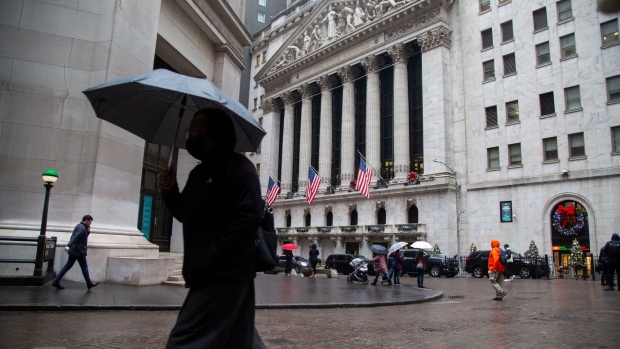Feb 6, 2023
NYSE Plans to Pay in Full 60% of Claims Submitted After Glitch
, Bloomberg News

(Bloomberg) -- Investors burned by last month’s malfunction on the New York Stock Exchange can recoup all of their losses, but only if their trades fit certain parameters. The rest may wind up with nothing.
The exchange operator told clients in recent days about its plans to cover all losses for orders posted or routed to NYSE, while loss-making trades triggered on other venues will not be covered, according to people with knowledge of the matter. In practice, three firms say NYSE will only reimburse roughly 60% of the claims filed. Others may qualify for more, one of the people said.
The reimbursement, which ranges in the single digit millions, totals far more than the $500,000 NYSE sets aside each month to cover disruptions, with $50,000 carried from previous months. NYSE may have to seek permission from regulators to cover losses that exceed that pool, the people said.
“In accordance with our rules, we expect to reimburse members 100% for all impacted orders that were received by the exchange,” a NYSE spokesperson said in an emailed statement Monday. “This is part of the protections that come with trading on a transparent, public exchange.”
Canceled Trades
The glitch on Jan. 24, which traced back to human error, canceled thousands of trades affecting hundreds of securities, including those that fell outside parameters set to avoid large price swings, or the so-called limit-up, limit-down bands. Other trades were affected but fell outside of the parameters for a trade being marked as “null and void.”
Thousands of trades and hundreds of securities were involved, some marked as “aberrant.” Banks, retailers and industrial companies were among those affected, including Wells Fargo & Co., McDonald’s Corp., Walmart Inc. and Morgan Stanley. The error resulted in some gyrations that spanned almost 25 percentage points between the high and low prices in a matter of minutes.
Claims were submitted by retail brokerages including Charles Schwab Corp. and Robinhood Markets Inc., as well as market makers Virtu Financial Inc. and Citadel Securities, the people said.
The rules for submitting claims gave NYSE until the end of last month to evaluate them and decide how much it would pay. For the roughly 40% that don’t qualify, investors will be on the hook, including for trades that were triggered on other exchanges because of erroneous prices on NYSE.
Discussions are still under way and clients of the exchange, including market makers and retail brokerage firms, are able to appeal NYSE’s decision, pushing back on the calculation if they choose to pursue the matter, the people said.
(Updates with background on the malfunction in fifth and sixth paragraph.)
©2023 Bloomberg L.P.






